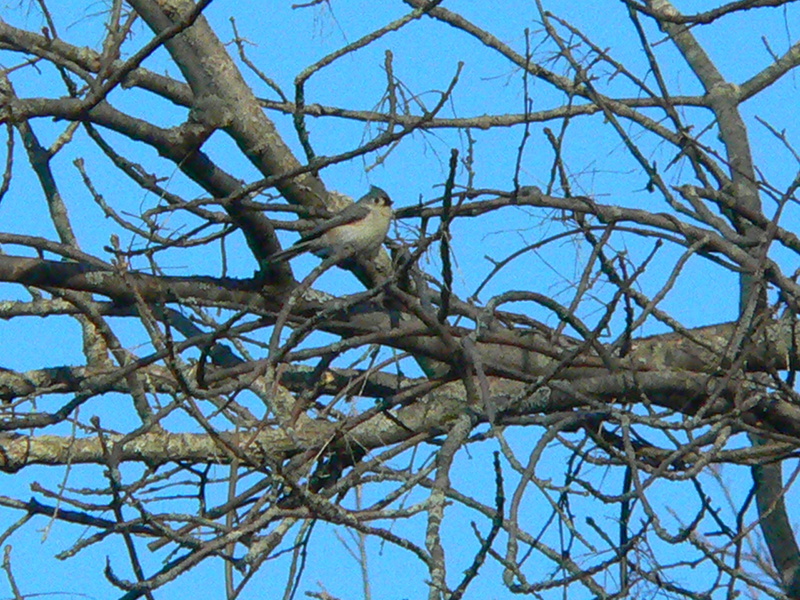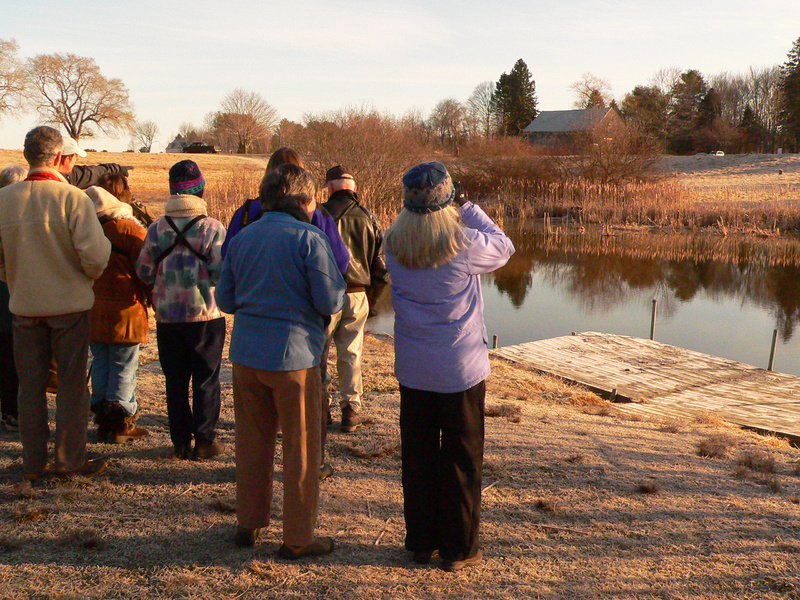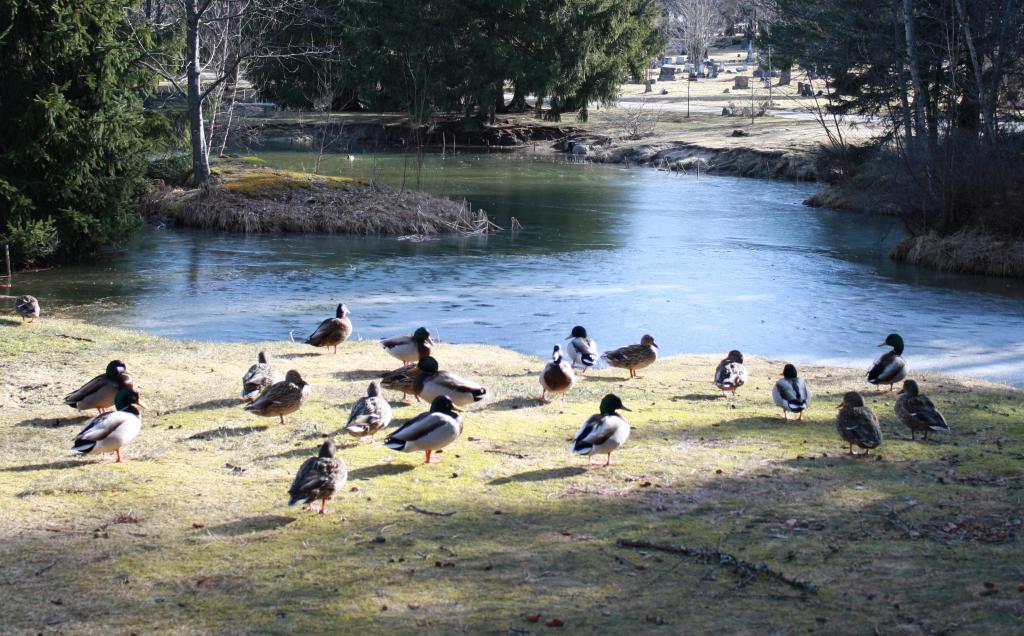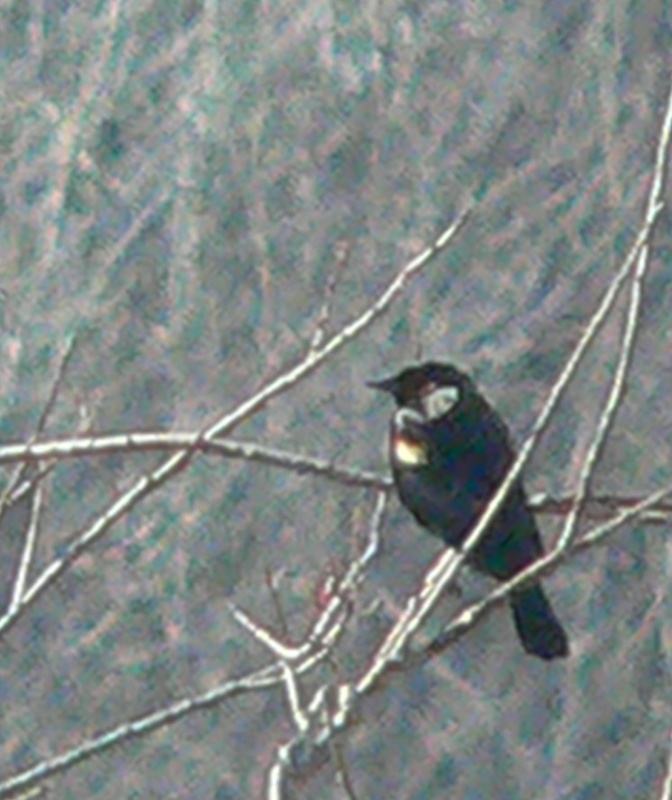Cardinals are red, crows are black, and gulls have a penchant for sandwich stealing.
Therein lies my bird-watching wisdom.
Or lack thereof.
I often watch my neighbor’s bird feeders, which are placed agreeably close to my kitchen window. But when it comes to identifying the sundry winged visitors who frequent that South Portland hot spot, I can only make up my own names. There are a host of birds on my block unwittingly bearing names like “Old Blue Hair,” “Red Belly” and “Frank.”
It’s a discourtesy to local fowl. (And I make it a point not to be discourteous to local fowl. I’ve seen Hitchcock’s “The Birds.”)
So it was a blend of bird curiosity and winged pressure that led me to a recent bird walk at Maine Audubon’s Gilsland Farm in Falmouth.
Staff naturalist Eric Hynes leads the Thursday walks along the scenic paths behind the nature center, starting at the convenient pre-work hour of 7 a.m. I found myself among a dozen local bird-watchers meeting up in the parking lot, each of us sporting the most important of bird-spotting tools: binoculars.
While we stood making small talk and signing in, a flash of brown streaked through our congregation and bolted off before I could register what it was. A blowing leaf? A trick of the eye?
“Very cooperative birds here,” Hynes remarked. “If we don’t move, they’ll come to us.”
The birds, it seemed, weren’t shy about showing off their space. And before our feet transitioned from asphalt to frosty early-morning grass, we heard the symphony of chirps and songs calling from the nearby trees.
It’s an interesting time for bird-watchers, according to Hynes. The spring migration means new birds are reappearing each week, like the trickling return of leaves to the trees. And the nakedness of the branches makes spotting a bit easier, the way it’s easier to see a birthmark on the head of a bald man.
Not far from the nature center we overheard a quick-paced tapping. Hynes directed our eyes upward to the top of an evergreen, where a bird clutched the bark and hammered its beak into the tree’s broken trunk.
A woodpecker. I knew that.
It’s smaller body, black and white coloring and seemingly checkered wings helped identify it as a downy woodpecker. Now that I didn’t know.
I raised the binoculars for a closer look, noting the bird’s head stripes and the red patch on top, like a boldly colored beret. He was kind enough to loiter there as the group took turns peering through the birding scope Hynes had set up.
Many of the other birds, however, weren’t as generous with their time.
As we moved along the path, small bodies flitted in the trees in my periphery, too quick for me to focus on. Hynes and other experienced bird-watchers called out species they recognized by either sight or sound.
Hynes noted the chickadee and its two-syllable call, “fee-bee.” There were tufted titmice and American tree sparrows. Overhead, another birder pointed out what appeared to be an animated smudge on the blue sky. With little effort, Hynes pegged it as a kingfisher and referenced the white patch on its wings as it flapped away.
After a while, I got better at training my eyes to discern movements on the side of the trail and overhead. I spotted a solitary brown bird and was quick to grab my camera and take a few photos, until I realized the bird wasn’t a bird at all, but an obstinate leaf clinging to a high branch.
Hynes, of course, didn’t have the same trouble.
He set up the scope to face the Presumpscot River estuary where a red-breasted merganser bobbed in the gentle water. Around the bend we took in a pair of American wigeon and some black ducks, all of whose names I had to write down to remember.
Throughout the morning, Hynes remarked on bird behavior, like how some birds use their songs to argue territory – an overhead song-fight – or how crow “teenagers” often return to the nest the year after they’re born to help raise their younger siblings.
The tidbits made me realize how little I knew about even the most common of birds – some of whom I’ve seen in my own backyard on hundreds of occasions.
Suddenly I found myself wanting to know more.
THANK YOU, MAY I HAVE ANOTHER
A few days later I met up with Derek Lovitch, co-owner of Freeport Wild Bird Supply along with his wife, Jeannette. Lovitch also leads group and private bird-watching tours in Maine and elsewhere.
We headed over to Capisic Pond in Portland. The morning sun had awoken the area’s inhabitants and the birds sounded off from different directions. Before we’d even turned our eyes to see anything, Lovitch was taking note of what he heard. It may be called bird-watching, but sound plays a big part in the hobby.
As we walked, my eyes darted from shrub to tree to water’s surface like some paranoid pedestrian. Amid the browned leaves of dried cattail, a black bird sang out. Even without the binoculars, I could see the distinctive red and yellow markings on the bird’s wing.
But Lovitch suggested I also take in the larger picture – the bird’s immediate environment, it’s overall shape and size – before cruising for details. Knowing this was a black bird loitering on the cattails (versus the treetops or the grass) in early March helped narrow the possibilities. A bird-watcher could spend hours thumbing through a guidebook looking for that hint of color on a wing. “Taking in the whole bird,” as Lovitch put it, can reduce the search to a few pages.
There was no shortage of birds at the pond – grackles and cedar waxwings, a cardinal’s red feathers standing out against the brownness of early spring and robins feeding on the winter remnants of a crab apple tree.
While these were only a fraction of the species that might be seen here in a month or two, there was plenty to keep a bird-watcher busy.
Sticking around Portland, Lovitch and I moved over to the ponds at Evergreen Cemetery. Noted for being a prime spot later in spring, in March the cemetery is a sure thing for ducks. A team of mallards rested near the pond’s shore, warmed by the sun glinting off the water’s surface. A few took the opportunity for a morning paddle. None seemed to pay much attention to our presence.
Along the trail, the foliage was quiet. Lovitch began pishing – a “wish-wish-wish” alarm call that gets the attention of nearby titmice and chickadees. The birds seemed unmoved and Lovitch noted the regularity of birders in Evergreen likely made pishing less effective.
Continuing on under the thin tree cover, I noticed something familiar overhead. Lovitch spoke the name before I could get the name “downy woodpecker” out. It didn’t matter that he stole my bird-identifying glory. I still knew I’d added one more bird to my short list of “fowl I have a chance of recognizing.” With practice, that list will grow.
And practice is simple, with easily accessible habitats even in citified places like Portland. Birding also makes a handy excuse to get outside.
Despite having lived in close proximity to Gilsland Farm and Evergreen Cemetery for years, the birding excursions marked my first trip to either. “Birding gives you such a good reason to go places,” said Lovitch.
You might also catch glimpse of something you wouldn’t otherwise see, Lovitch said. “There are amazing spectacles in nature that you might only notice when you’re birding.”
And who knows, there may be spectacles in your own backyard.
Staff Writer Shannon Bryan can be contacted at 822-4056 or at:
sbryan@mainetoday.com
Send questions/comments to the editors.






Success. Please wait for the page to reload. If the page does not reload within 5 seconds, please refresh the page.
Enter your email and password to access comments.
Hi, to comment on stories you must . This profile is in addition to your subscription and website login.
Already have a commenting profile? .
Invalid username/password.
Please check your email to confirm and complete your registration.
Only subscribers are eligible to post comments. Please subscribe or login first for digital access. Here’s why.
Use the form below to reset your password. When you've submitted your account email, we will send an email with a reset code.